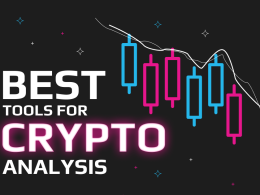Humanity has evolved through great social changes that marked times, defined mainly by technological advances that modified paradigms, providing value and utility to people for their survival.
If we consider this evolution based on technological advances applied mainly to the economy, there have been four great eras: Hunting-Gathering Society, Agricultural Society, Industrial Society, and now we are in the fourth era, the Information Society.
The change towards this last era has its foundations in computing, and its evolution with the arrival of the internet.
Although computer science has the contribution of different scientists, for didactic reasons, we can identify some of them by virtue of their great achievements, considered milestones in this science.
The distant beginnings of computing in the 19th century, with Charles Babbage, who designed a special-purpose machine that could be used to calculate values of polynomial functions through the difference method. Ada Lovelace, an English female mathematician who was a collaborator of Charles Babbage, suggested the idea that punch cards could be adapted so that will cause Babbage’s engine repeated certain operations, which is why she is considered the first programmer. Then, Alan Turing, who made great contributions to cryptography. Finally, Tim Berners-Lee, the inventor of the World Wide Web, as the internet protocol we know today. Note the great contribution of English scientists to computer science.
Thus we come to the modern Blockchain, a shaper of the cryptocurrency space.
The Blockchain System
One of the earliest references to the “chain of blocks” dates back to a 1976 patent application titled: “MESSAGE VERIFICATION AND TRANSMISSION ERROR DETECTION BY BLOCK CHAINING”. In 1978 that patent, #4,074,066, was granted to the inventors Eharsam, Meyer, Smith, and Touchman, and assigned to IBM. The abstract mentions the basic idea of securing the exchange of messages by means of cryptographic functions such that each encrypted block is a function of all previously encrypted blocks of the message. In essence, the encrypted message consists of several blocks, each of which is chained to the previous ones.
The cryptographer David Chaum first proposed a blockchain-like protocol in his 1982 dissertation “Computer Systems Established, Maintained, and Trusted by Mutually Suspicious Groups“.
In 1991, Stuart Haber and W. Scott Stornetta described other work on a cryptographically secure Blockchain. The system they designed used a clustered information chain system, with cryptographic security, to store time-stamped information. In 1992, the Merkle tree was incorporated into the design, which made the system more efficient, by allowing several documents to be gathered in a single block. However, this technology was not used and the patent expired in 2004.
Then in 1998, Wei Dai described a decentralized solution for electronic payments based on public key cryptography. This first work was evolved by other authors until October 31, 2008, when the article defining the mechanism for implementing the Bitcoin digital currency was published under the pseudonym of Satoshi Nakamoto: Bitcoin: A Peer-to-Peer Electronic Cash System.
Blockchain Governance
An interesting document published by the company IOHK, developer of Cardano, deals with Blockchain governance: SoK: Blockchain Governance.
Unlike centralized organizations, which are governed by a few, Blockchain platforms are operated in a decentralized manner by different actors. The decentralized nature of the Blockchain has been essential to its appeal, however it has also introduced new challenges.
Today’s evolved Blockchain systems come with a promise of decentralization that, in most cases, hits a snag when key decisions about modifying the software code base must be made.
In a “code is law” environment, changing code can be a controversial process, frustrating for system participants, and most importantly, highly disruptive to underlying systems.
We find examples of this in the two major cryptocurrencies of today, Bitcoin and Ethereum, which suffered “hard forks” and resulted in the creation of alternative systems, dividing engineering teams, computing resources and doubling digital assets, and not less important, creating confusion in the community.
These events are directly related to Blockchain governance, that is, the set of processes that Blockchains use to make decisions, and converge in a widely accepted direction, so that the system evolves.
There are different systems with varying sophistication and degrees of integration within the platform, using on-chain or off-chain voting systems. This makes the topic of Blockchain governance a fertile territory for systematization and constant evolution.
The off-chain governance system is the most centralized of such mechanisms, with the core developers making most of the decisions. On-chain governance is achieved through more transparent and inclusive voting systems. I have written an article on this topic(1).
To understand Blockchain governance, it is necessary to define the theoretical framework of properties for the design of solid decision systems.
According to the Research Paper that I cited there are seven properties: Suffrage, Confidentiality, Verifiability, Pareto Efficiency, Accountability, Sustainability and Liveness.
This document analyzes different Blockchains, and verifies that the theoretical properties are fulfilled to different degrees, even partially by at least one system. However, it is observed that there is no Blockchain that satisfies most of the properties. All these properties seem necessary to achieve a just system of government according to this document.
Let’s take a look at each of the properties.
Blockchain Governance Properties
The seven properties listed in the paper are grouped according to their area of impact in: Voting System, Incentives, Security and Timeliness.
The properties related to the Voting System are:
—Suffrage deals with eligibility for participation, determining a set of “decision makers” as a subset of the community, and which can produce legitimate results, as long as it is inclusive. Depending on the system, this can be distinguished into active suffrage, which is the right to vote one’s own, and passive suffrage, which is the right to stand for election and become an elected representative.
—Pareto Efficiency is a situation in which no individual, or preference criterion, can improve without making at least one individual, or preference criterion, worse off. In essence it is a zero sum equilibrium. So,andBlockchain governance system will necessarily depend on a series of decision-making procedures, collecting and combining individual and competitive preferences in specific actions, to seek the most favorable decision-making outcome.
The properties related to the Security are:
—Confidentiality refers to the contributions of decision makers, keeping the input private. A Blockchain governance system satisfies secrecy if each time a decision-making process takes place, an adversary cannot ascertain input from any participant, where an algorithm is executed whose only inputs are the overall count and, if the adversary is a participant who cannot obtain input from the adversary.
—Verifiability is the verification that the input has been taken into account in the output, and has been calculated correctly. Complements the Confidentiality, and it is a crucial property of any voting system, since it legitimizes the result of the election, by which everyone can transparently corroborate the correct computation.
The properties of the Incentives who make the decisions:
—Accountability is the decision makers must be held accountable for the contributions they provide to the system. Despite the collective decision, accountability contains individual responsibility. If enough participants vote for a bad decision, the value of the system to each voter decreases, whether or not they support the decision.
—Sustainability includes the appropriate system of incentives for the system to evolve in a constructive way, for decision makers who provide significant contributions. Blockchain governance depends on two main actors: those who develop and propose changes, and those who decide whether or not to adopt these changes. The contributions of both actors should be rewarded, or encouraged.
Finally, there is a consideration of opportunity, contained in the Timeliness:
—Liveness is the ability of the system to produce output in a convenient manner. In platforms with formal on-chain governance, the process for proposing and adopting changes is often limited by fixed time frames. An unforeseen event that requires urgent action will not be resolved immediately through the platform governance process. Therefore, a Blockchain governance system must not only be able to process regular changes, but also urgent changes.
. . .
(1) The Evolution Of Voting Systems On The Cardano Blockchain












